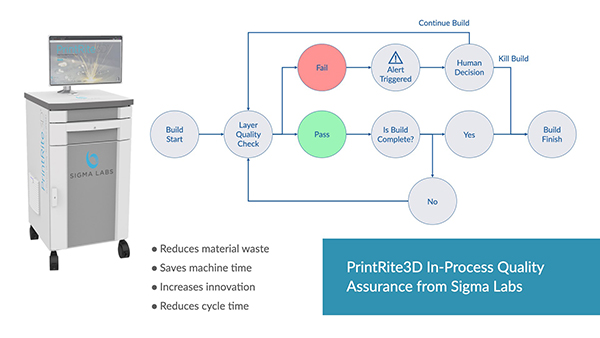View or stream online

Sigma Labs on Metal AM’s Maturity for Mass Production Duration
8:14 hrs/min/sec
Subscribe today

Latest podcast episodes
- Jon Peddie on Milestone Moments in the History of CAD
- Leadership Profile: Marco Turchetto of ESTECO on How Automation can Improve Simulation Workflows
- Podcast Series: Engineer Innovation
- 2023 State of Design & Make Report Reveals Skilled Labor Shortage and Sustainability Concerns
- More podcast episodes
Latest News
October 26, 2021
 .
.
As Additive Manufacturing (AM) systems improve in speed and output quality, many are considering it as a method for mass production. The technology's evolution from a prototyping to manufacturing mechanism is not exactly straight forward. The transformation is fraught with unanswered questions, ranging from the regulatory bodies' willingness to certify AM parts for flight-critical components to the consistency of output.
Jacob Brunsberg, Senior Vice President of Product, Marketing, and Strategic Relationships at Sigma Labs, discussed these issues with DE in this podcast.
AM for mass production is already “a reality today for a number of users and large companies,” producing thousands of parts ranging “from implants to jet-engine and rocket components,” he pointed out. “That number of people, though, is not extremely high today. It takes incredible knowledge and a lot of experimental work today to understand windows of operation.”
The approach is currently limited to aerospace, automotive, and medical equipment makers with deep pockets, he noted. But, due to the flexibility of AM, the practice has also spawned parts with topology previously unimaginable. “There are lattice structures and implants for bone and growth. There are complex heat exchangers with thin walls holding fluids, in some cases,” he pointed out.
In aerospace, parts with new design made with new technology are subject to stringent regulatory approvals. The more flight-critical the part, the longer it takes to certify. This is a hurdle 3D-printed parts must also face. “Creating standards and following those standards is a huge part of what is going to take our industry from where it's at today to qualifying and certifying those components faster,” Brunsberg reasoned.
Sigma Labs provides in-process QA software for additive manufacturing. Its flagship product PrintRite3D “detects and classifies defects and anomalies real-time during the manufacturing process, enabling significant cost-savings and production efficiencies,” according to the company.
For more, listen to the podcast above. (Intro and end music courtesy of Bensound.)

Subscribe to our FREE magazine, FREE email newsletters or both!
Latest News
About the Author
Kenneth Wong is Digital Engineering’s resident blogger and senior editor. Email him at [email protected] or share your thoughts on this article at digitaleng.news/facebook.
Follow DE



